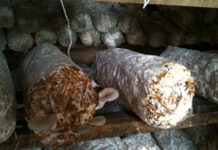The East African Community (EAC) through its specialized institution, Lake Victoria Fisheries Organization (LVFO) is rolling out a specialized programme to highlight the contribution of fisheries industry to the various member states’ economies.
This comes at a time a latest report released by the East African Legislative Assembly (Eala), indicates that the sector’s contribution of fisheries to the economy of the partner states is grossly undervalued.
The report on agriculture, tourism and natural resources further shows that contribution of the marine resources is only restricted to values at production or harvest levels. “”All contributions along the value chain go into other sectors,” read the report in part.
Instead of being valued under the fisheries sector, proceeds from fish harvests go to the processing industries and trade sectors.
As a result, the report which was tabled before a recent Eala sitting maintains that that this has been a drawback to the fisheries industry.
“The economic contribution of fisheries to the national GDPs is only seen in raw harvests not in earnings,” it read.
The report was tabled before a recent Eala sitting in Bujumbura, during which recommendations were made to boost the fisheries sector.
In this, LVFO-the Jinja-based institution is reaching out to the relevant ministries, departments and agencies in the partner states in a bid to establish the proceeds from fisheries-related activities.
According to the body’s committee members, this will give a more realistic picture than it is today.
Contribution of fisheries to partner states’ GDP
Statistics, though, show that the contribution of the fisheries sector to the partner states’ GDP has continued to increase.
Currently, the sector contributes 1.75 percent to the GDP of Tanzania and 3.6 percent and 0.6 percent for Uganda and Kenya respectively.
The shared Lake Victoria alone is a major source of fish for domestic consumption and export, contributing to $400 million annually.
LVFO undertakes capacity building programmes for the fishers and other stakeholders on boosting production of the fisheries.
Added to that are fish safety, marketing programmes quality assurance, cross border fish trade and marketing.
Aquaculture management guidelines
The organisation’s secretariat also works with the EAC partner states on developing various fisheries and aquaculture management guidelines.
Currently, however, only about 500,000 tones of fish annually is realised, yet the lake has the potential to yield fish valued at over $800 million annually.
Further processing and marketing of fish from the lake in the local and export markets can generate an additional value of about $57 million.
During its oversight activity at the LVFO, the Eala House Committee was informed on progress being made to promote fish farming in the region.
Fish production
Uganda is not only leading in fish farming in the seven nation bloc but is the third highest aquaculture producing country in Africa with 120,000 tonnes annually.
Kenya is the second with 24,000 metric tonnes followed by Tanzania which produces 14,800 tonnes annually.
Through aquaculture engagements, more than 17 industrial plants for processing fish from Lake Victoria have been established in the three founder members of the EAC.
LVFO has also spearheaded diversification of fish products and marketing of live fish as well as production of other fish products.
Other initiatives include promoting value addition of dagaa and processing and trading of the lucrative Nile Perch fish maw business.









